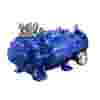Global Leader
Backed by over 110 years of experience, NASH certified experts provide aftermarket support with maintenance, service, parts, and repair. Service centers are globally located to protect your vacuum system investment and provide quality, reliable, and efficient solutions.









.jpg?format=pjpeg&width=100&quality=10)



